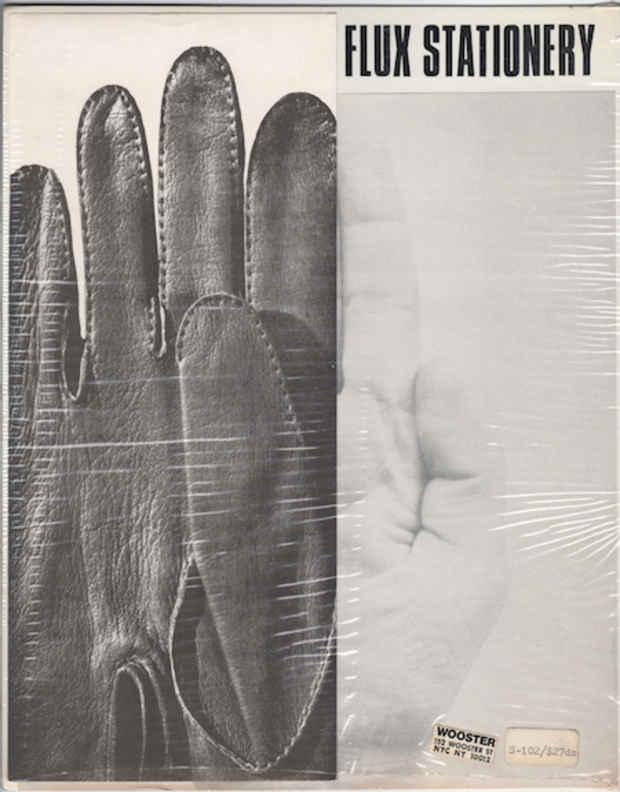Wooster Enterprises "1977-1978"
Churner and Churner

This event has ended.
Churner and Churner presents the first exhibition of the complete works of Wooster Enterprises, the Fluxus-affiliated stationery design and production studio founded in 1976 at 152 Wooster Street by Soho artists Jaime Davidovich and Judith Henry. A conceptual cousin to the Fluxshop, Wooster Enterprises sold paper “objets d’art”—postcards, note pads, and more—to Macy’s, Bloomingdale’s, B. Altman’s, and novelty stores across the U.S. The full product line will be on display at Churner and Churner, with many items from the Wooster archives for sale for the first time.
Eager to endorse Davidovich’s project, Fluxus founder George Macunias licensed Wooster Enterprises to reprint several styles of Fluxus stationery, masks, and wallpaper that had previously been produced only in limited editions. With these works, as well as Davidovich’s and Henry’s own designs for greeting cards, writing pads, and confetti, Wooster's product line made its debut at the 1977 New York Stationary Show. The aesthetic indicators of conceptual art – simple black and white graphics with clean text – lent themselves naturally to reproduction and to grafting on to readymade media.
With Wooster Enterprises, Fluxus broke out of the art-world context and into the everyday world of commerce, testing how much “high art” the commercial realm could absorb. Wooster Enterprises was not an attempt to democratize art by providing it at a lower price. Instead, the artists marketed their wares directly to department stores and card shops, sidestepping the traditional art-market channels of studio, gallery, and museum. In the Soho environment of the 1970s, such an effort to bypass the traditional gatekeepers of culture was not unusual, but Davidovich was particularly successful in getting attention for his “brand.”
The 1977 New York Stationery Show installation generated press in New York magazine, the New York Times, and Cosmopolitan as well as strong demand for Davidovich’s products. Soon crumpled paper stationery, a two-pad set of “Things to do/Things not to do,” and hand-and-glove writing sets were appearing across the country. As Maciunas noted shortly before his death, in a 1987 interview, Davidovich was marking out the future for Fluxus by taking artistic products directly to the consumer. Yet, the success of the enterprise also spelled its downfall: stores took 90 days to pay for goods, creating a shortage of cash to pay the printer. Rather than sign on outside investors to grow the business, Davidovich chose to shut down Wooster Enterprises at the end of 1978.
Virtually unknown today, Wooster Enterprises is primed for discovery as a pioneering project in self-conscious “branding” and an analogue-era predecessor to contemporary digital artists’ efforts to “cut out the middleman” by distributing their work online. This exhibition brings the project full-circle, calling attention to its art historical significance and its legacy in the contemporary art market.
A publication with an introductory essay, source material, and interviews with Jaime Davidovich and Judith Henry by Leah Churner will accompany the exhibition.
Media
Schedule
from July 12, 2012 to August 18, 2012
Opening Reception on 2012-07-12 from 18:00 to 20:00